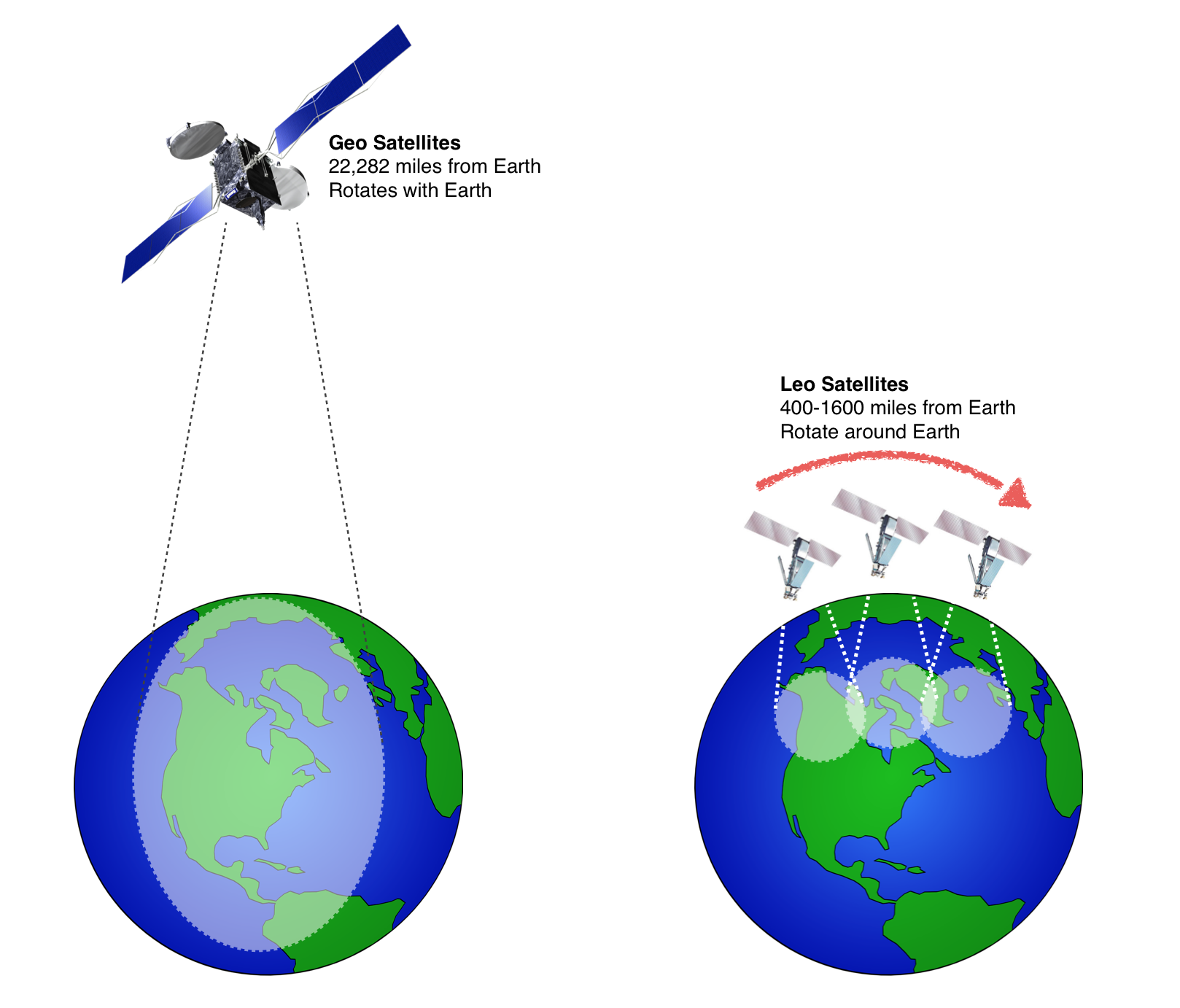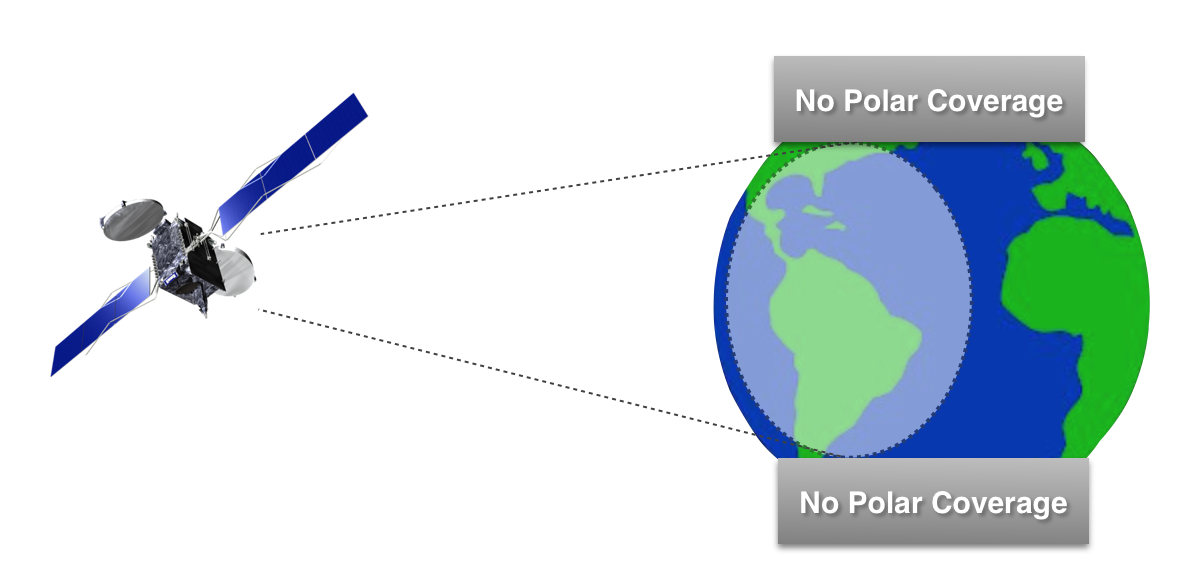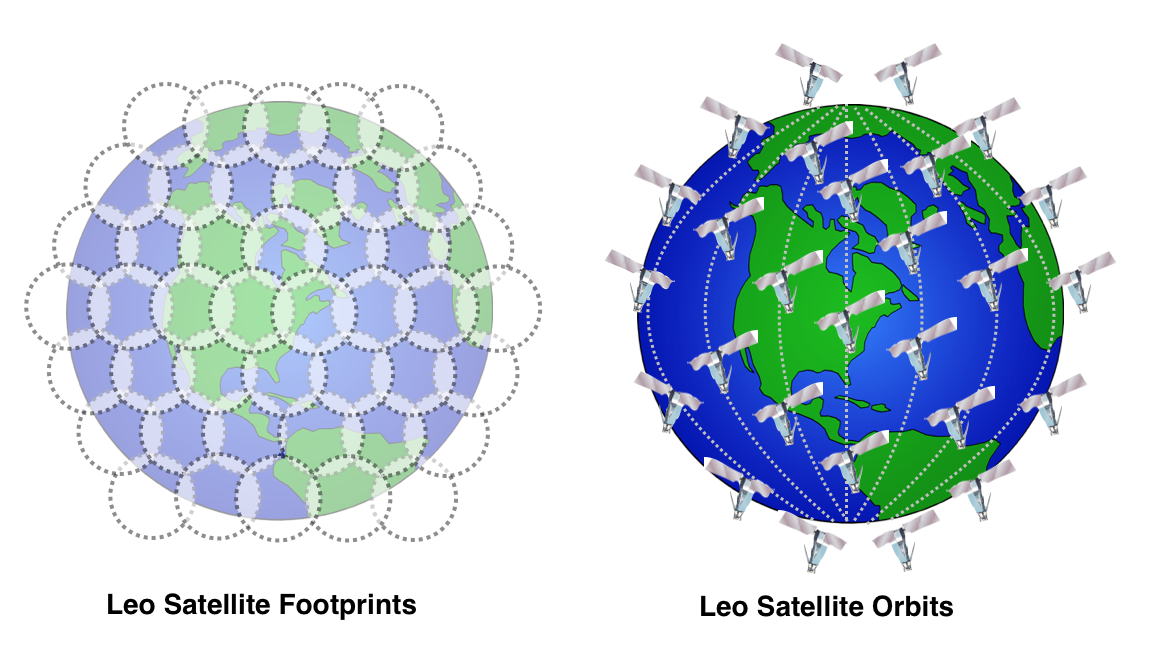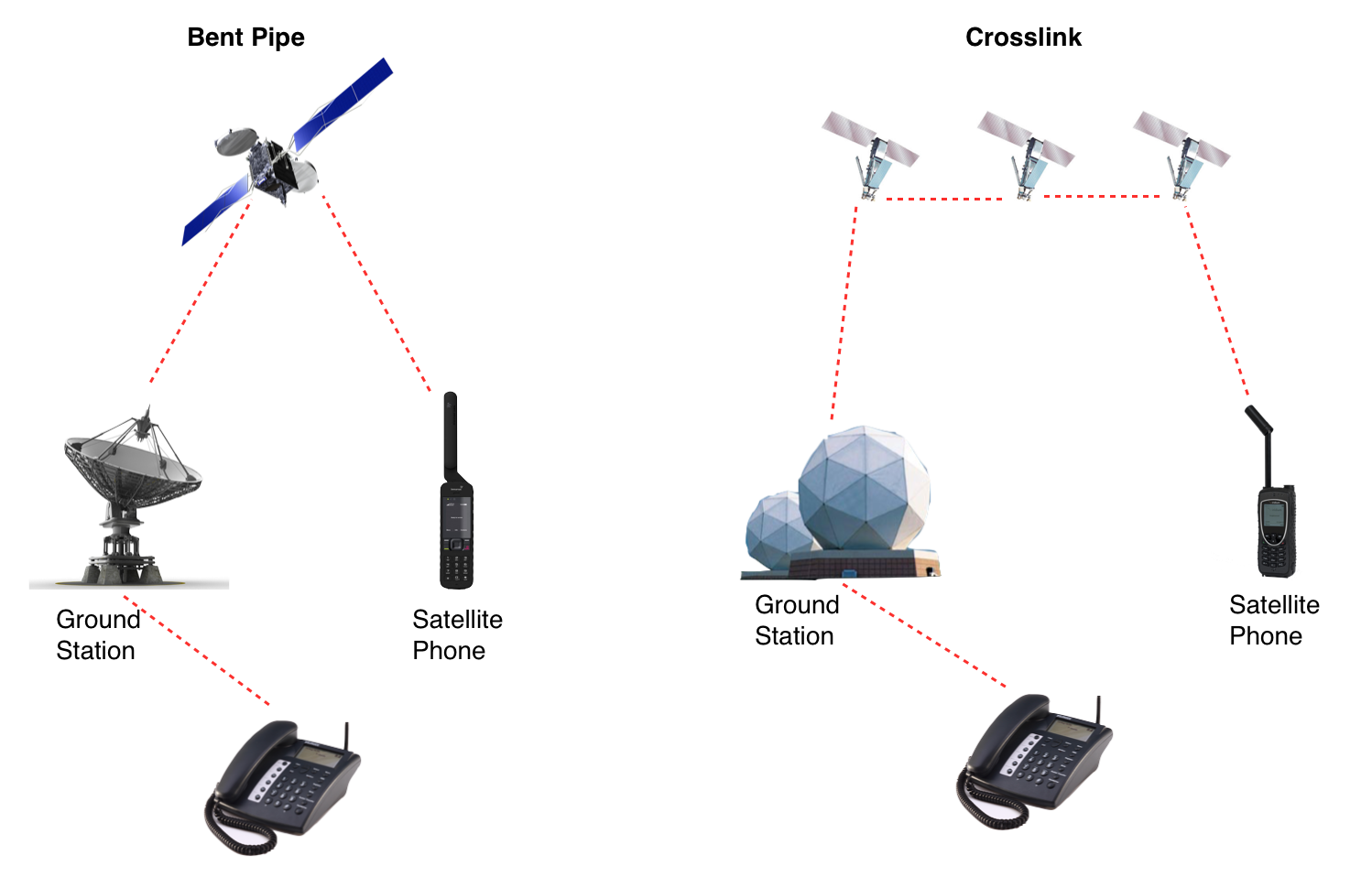Choosing a Network
Satellite operators own and maintain groups of satellites (constellations) synchronized and coordinated with ground stations. Ground stations receive your calls from the satellite and route them to land or cellular lines. Together they make up a satellite network.
The following table compares size and market share of the four primary mobile satellite system (MSS) operators:
Market Share Comparison
* Mobile Satellite Services, 7th Edition, Northern Sky Research, 2011
| Globalstar | Inmarsat | Iridium | Thuraya | |
|---|---|---|---|---|
| Global Market Share by Revenues* | 5% | 54% | 24% | 12% |
| Handheld Market Share by Subscribers* | 15% | 3% | 44% | 38% |
| Coverage Area | Global - Not poles or oceans | Global - Not poles | Global | Europe, Middle East, Africa, Asia, Austrailia |
There are hundreds of differences between satellite networks that affect performance. Key factors specific to mobile satellite phone performance are:
- Orbit Type
- Transmission Technology
The following table lists the orbit types, number of satellites and transmission technology used in each network:
Network Technology
| Globalstar | Inmarsat | Iridium | Thuraya | |
|---|---|---|---|---|
| Orbit Type | Low Earth Orbit | Geosynchronous | Low Earth Orbit | Geosynchronous |
| Number of Satellites | 32 | 3 | 66 | 2 |
| Transmission Technology | Bent Pipe | Bent Pipe | Cross Link | Bent Pipe |
Satellite Orbit Type

Geosynchronous satellites, also called a GeoSTATIONARY or Geo, are located directly above the equator 22,000 miles from Earth. Because of the distance from the Satellite to the planet only about 4 Geos are needed to have near global coverage.

It takes these satellites a full 24 hours to circle the planet as their orbital speed matches Earth’s rotation. For this reason they appear fixed or stationaly on the horizon.
Most communications satellites are in Geosynchronous Orbit.
A Geo satellite requires .25 seconds for a round trip (ground to satellite) transmission. This delay is easily noticed during voice calls with satellite phones.
Low Earth Orbit or Leo satellites orbit at only 400 to 1600 miles above Earth. This significantly shorter distance reduces the transmission delay to only .05 seconds and further reduces the need for sensitive and bulky receiving equipment.
The orbiting periods of Leo satellites range from 90 minutes to two hours, while the radius of the footprint of Leos vary from 1875 miles to 2500 miles.
Unlike the Geos, Leos are above the local horizon at maximum of only 20 minutes for an observer.
A Leo satellite system at 480-870 miles only covers 2.5% to 5% of the earth surface therefore many more Leo satellites are needed in different inclined orbits to cover a similar area easily covered by one Geo satellite.

How does orbit type impact satellite phone operation and performance? The following table lists advantages and disadvantages of both.
Orbit Type Comparison
| Orbit Type | Advantage | Disadvantage |
|---|---|---|
| LEO | Can provide global coverage, including poles with enough satellites. Signal can be re-acquired if dropped by another satellite without moving phone to new location. Good choice for mobile applications. |
Smaller coverage footprint per satellite. Many more satellites required for global coverage. Optimal performance requires clear view of 360 degrees. Dropped calls inevitable when topography obstructs view. Not ideal in locations with limited view to sky unless GEO is not an options. |
| GEO | Coverage is constant with satellite fixed in one location on horizon. Smaller window of visibility to satellite required. Good in fixed or permanent locations. Large coverage area per satellite. Only 3 satellites required for near global coverage. |
No coverage in polar regions. User must remain stationary. Additional, expensive tracking antenna and hardware required for mobile applications. Obstructed signal cannot be re-acquired unless user moves to new location within satellite view - not always an option. |
Transmission Technology

The following chart compares how transmission technology can influence satellite phone operation:
Transmission Technology Comparison
| Transmission Technology |
Advantage | Disadvantage |
|---|---|---|
| BENT PIPE Satellite operates like mirror in the sky or "bent pipe". Receives signal from satellite phone and bends signal back towards Earth and nearest ground gateway. All switches and complex hardware located at gateways. |
Reliable transmission employed by virtually all satellite operators. If multiple satellites are in view of phone, allows for path diversity. Regional phone numbers for inbound calling are possible. Best voice quality. |
Both phone and ground station must be in same geographic locatino and in view of satellite. Dependent on ground infrastructure. LEO networks have small footprints per satellite. LEO satellites combined with bent-pipe transmission require numerous ground stations. |
| CROSS LINK Satellite acts as a router in the sky. Uses inter-satellite links to switch voice and data signals. Does not depend on availability of regional ground gateways to deliver calls. |
Requires only one ground station for entire constellation. Additional ground stations not required but provide network reliability and redundancy. Lower cost phone to phone calling as ground network is not required to complete a call. |
Reduced voice quality for users farther away from ground station or each other. |